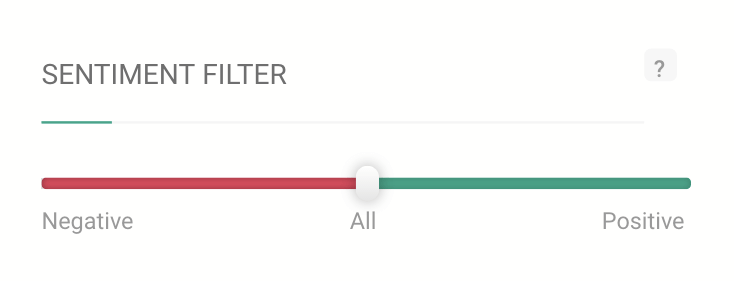Buyer Persona & ROI: How well do you know your customers?
A buyer persona is a detailed description of your prospective customers. There is a direct relationship between high ROI (return on investment) and well-crafted buyer personae.
The better you know your customers, the better you’ll be able to meet their needs, and the happier and longer they will be with your company (ROI↑).
Now, let’s talk about the logistics.
Detailed descriptions of your customers… sounds fairly simple, and the concept is pretty much what it sounds like. However, after creating these personae you’ll need to do extensive market research for precision and then apply thorough analyses of your data for accuracy.
Ideally, you’ll already have a wide range of buyer personae at your disposal, representing customers at various stages of the buyer’s journey and at different levels of usage. The more in-depth the descriptions, the better.
Buyer personae are incredibly useful for every division in your company: from R&D (research & development) to marketing, IT, and customer service. All your employees can benefit from getting to know your customers.

Wouldn’t it be helpful to know that Mike the marketing executive at a modern PR agency is also a tech-savvy gamer in his mid-30’s who relies on products or services like yours to track the progress of his campaigns? And because his day is filled with so many tasks, he prefers to be contacted via e-mail instead of receiving disruptive phone calls? Or that Mike has been with the same agency for 5 years? And that over 25% of your customer demographics have similar personae?
Good to know, right?
That’s what a buyer persona can tell you – ideally, even more. Knowing all this and then using this info to do accurate market research helps your marketing team create personalized advertisements and campaigns to grab Mike’s attention; it alerts your customer service team of potential areas of concern for Mike; and it allows your R&D team to anticipate Mike’s needs when developing new products or updates.
Some points to consider when you’re creating buyer personae
Like with most things, it all begins with a question.
Start by asking yourself: what do you want to know about your customers?
Next: create a set of questions based on important customer details that would benefit your results. Ideally, these questions would help you create a story about your customers, giving you a picture of their day-to-day activities, their values, as well as their interests. These Q&As help you figure out who your customers are and how they use your product. For each individual customer, try to answer these questions:
Who are your customers?
- What is his/her profession?
- How long has he/she worked in this company or industry?
- What is his/her gender?
- How old is he/she?
- What is his/her salary or budget?
How do your customers use your product?
- In which industry is your product being used?
- Which feature appears to be the most popular?
- What is the size of the company using your product?
- Is he/she an experienced or novice user?
- How often does he/she use your product?
If you’re able to add even more questions and answers to your buyer personae, go for it! This is a good place to start, though.
Answer as many questions as you can using your company’s CRM (customer relationship management) tool. Then fill in the blanks with various customer feedback strategies until you’re able to answer all or most of the questions.
Most people stop here and think ‘OK, I’ve got a ton of info on my customers, and now I know how to target them in my campaigns’. This might be sufficient for some departments, but for most of us, it’s just the beginning.
Answering these questions and creating a buyer persona is just the first step to increasing your ROI. Now you have the information you need to form the right questions for market research. (Really, it’s all about the questions.)
The best place to do market research on your customers is in social media, especially since:
As of 2017, 81% of the population in the US are active social media users with personal profiles.
How do you begin? Again, questions are key.

The questions that you answered to create your buyer personae were like informative dots. When connected, they tell you a story about your customers. Based on this story, you can arrive at important keywords or phrases for each buyer persona. Then you can track online discussions which mention these keywords through social listening.
Knowing what to track opens a lot of doors. Monitoring relevant online conversations lets you:
- Do effective market research
- Find inspiration about the best ways to reach different personae
- Discover opportunities to interact with potential & prospective customers and build relationships online
- Subtly engage with customers to inform them of (new) features they might appreciate
- Make prospective customers aware of your product
- Generate sales leads
- Learn how to improve your product or service for users
- Keep track of what your customers are saying about your brand
- Protect your online brand reputation
- Find brand ambassadors
- See what your competitors are up to
- And more…
Social listening finds many uses, but for now, let’s stick to market research.
There’s nothing quite like data. The question is: how do you apply it?
After you’ve created your buyer personae and have determined the best keywords to track, use a social listening tool to monitor them and analyze the data for valuable insights. Brand24 is a powerful yet easy-to-use tool that shows you:
Which platforms your customers prefer to use so you know where to run campaigns
If your customers are more responsive to images, videos or text so you know how to design your campaigns
The hour/day/month/year/season your customers are most active so you know when to implement campaigns
What your customers like about your product or similar ones so you know which features to emphasize in your campaigns
What people associate with your product so you know how to direct your campaigns
These are just a few things that social listening can show you once you start tracking the keywords or phrases that those useful buyer personae gave you! See? I told you they’d come in handy.
Some tools also include extra helpful filters which you can apply to your data for additional analyses, organization, or to run deep searches within your results.
So, let’s recap with a question: how do you get high ROI from well-crafted buyer personae?
Step 1. Create detailed and accurate buyer personae.
Step 2. Use the personae to find important keywords to track with social listening.
Step 3. Analyze the social listening data and increase ROI with happier and more satisfied customers.
Now, final question (come on, you knew it was coming): just how well do you really know your customers?










![What is Brand Awareness? Guide & 9 Powerful Tactics to Build It [2022]](https://brand24.com/blog/wp-content/uploads/2020/12/15-The-ultimate-guide-to-brand-awareness-1400x660x2-640x300.png)

